When mounting plants, you only need a few things: The epiphyte(s), the mount, something to bind the plant(s) to the mount, something to provide moisture/fertilizer for the plant(s), and a way to hang or stand the mount in an upright position.
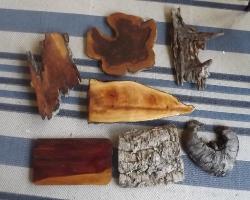
Your mount can be almost anything you can imagine. I have seen plants mounted on wire, glass, metal, and wood. I prefer wood simply because I like what's found in nature, and I find wood, with its variable coloration and texture, to be aesthetically interesting. The woods you see here (I use ten different woods) are round and rectangular cedar, 150 yr. old cypress and a cypress knee, heart-pine, white oak, and cork. I finish one side of my mount with chemically-cured epoxy and leave the other side natural. This epoxy is inert, and plants will grow on this surface without problems. One can use either side to mount the plant(s).
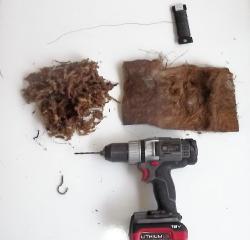
You will need a handful of long-fibered sphagnum moss, some coconut fiber, 20-28 gauge, green or brown florist wire, a cup hook (or 8-12 gauge, plastic-coated wire), and a drill with a small bit.
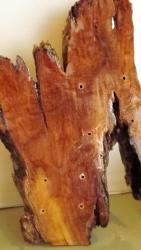
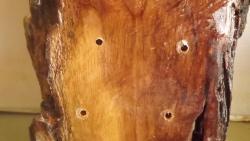
I am using a piece of old cypress wood, approximately 8"x15". I am going to mount two staghorn ferns, so I have drilled two sets of holes, each set having 4 holes. The holes are about 4" from each other (in a square).

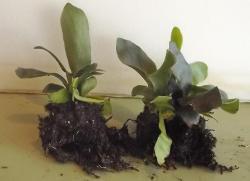
These staghorns are growing in 5" pots, and the second picture shows that I have removed a lot of the potting soil, but not all of it. I want to maintain as much of the natural root structure as I can.


The florist wire is threaded through the four holes in a crisscross manner and also in an across manner (starting from the back of the mount). You want to form two loops large enough so that the plant can easily slip under the wire. You will have a total of four wire loops. It really does not matter how you form the loops. Sometimes the shape/size of the plant(s) will dictate whether you use the crisscross or across type of loops.


I put a thin layer of coconut fiber on the mount and I want it to be wide enough to fill in between the holes and long enough so that I can wrap the coconut over the plant's root ball. Center a handful of sphagnum moss to fill the area between all four holes. All the coconut fiber does is hold the sphagnum moss/root ball in place.
Center the plant between the four holes and under the wire loops. While holding the plant firmly against the mount (a layer of coconut fiber and a layer of sphagnum moss will be beneath the plants root ball), wrap that "tail" of coconut fiber over the root ball and tuck it under the wire loops. Clinch in those wires from the back of the mount, closing the loops firmly over the coconut fiber/root ball. It is a little tricky to do this while holding the plant against the mount. Also, I only do one plant at a time, so the bottom one was done before starting the upper one.
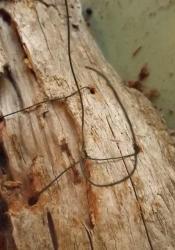
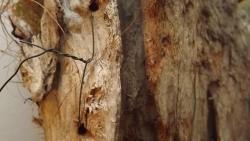
Twist the ends of the wires tightly on the back of the mount.

In the center/top of the mount, screw in a cup-hook. Pick a size that will easily support the weight of the mount/plant(s). This happens to be a very strong, stainless steel hook. When using very thin woods or thin cork, I will use a piece of plastic-coated wire, threading that wire through the wood on each side, and looping the two ends so that the wire won't pull through the wood. This would hang like a framed picture.
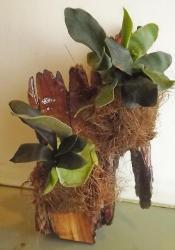
Twin-mounted staghorn ferns on cypress.
| Thread Title | Last Reply | Replies |
|---|---|---|
| Help on dividing Staghorn by chuck7701 | Feb 24, 2023 5:51 PM | 10 |
| Mounting ideas by chuck7701 | Mar 22, 2015 11:01 AM | 1 |
| Untitled by weddyperry | Feb 3, 2015 3:52 PM | 1 |
| Great How to article by ctcarol | Jan 24, 2015 6:56 AM | 18 |
| Great article! by plantladylin | Jan 16, 2015 9:16 PM | 11 |
| Got to give it a try by Oberon46 | Jan 10, 2015 12:27 PM | 2 |
| Untitled by donnabking | Jan 10, 2015 11:06 AM | 1 |